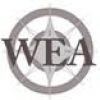Business cycle, asymmetries and non-linearity: The Bolivian case
Vol. 13, No 2, 2020
|
Roger Alejandro Banegas Rivero
Department of Economics, Universidad Autónoma Gabriel René Moreno, Bolivia, E-mail: rbanegas@uagrm.edu.bo ORCID 0000-0002-3841-786X |
Business cycle, asymmetries and non-linearity: The Bolivian case |
|
Marco Alberto Núñez Ramírez
Department of Management, Instituto Tecnológico de Sonora, Mexico, E-mail: marco.nunez@itson.edu.mx ORCID 0000-0001-5825-4482 Corresponding Author Sacnicté Valdez del Río
Department of Management, InstitutoTecnológico de Sonora, Mexico, E-mail: sacnicte.valdez@itson.edu.mx ORCID 0000-0002-1786-5567
|
Abstract. In this paper, we deal with the problem of measuring business cycles: short, medium or long-term, with both theoretical and empirical discussions on the regularity of fluctuations versus asymmetries in their measurement phases. To achieve this, the approach is based on the combination of deviations on the level of trends (alternative filters) with the algorithm of Harding and Pagan (2002). At the same time, effective rates of economic growth by Markov’s chains was considered in order to identify non-linear regimes of expansion and economic contraction. Finally, quantifications on the natural rate of growth for Bolivia are offered under a sustained expansion regime from 1950 to 2015. The results suggest that due to asymmetries and the manner in which the business cycle is measured, we observe longer duration of a business cycle when it was measured from busts rather than from booms. |
|
Received: October, 2019 1st Revision: March, 2020 Accepted: May, 2020 |
|
|
DOI: 10.14254/2071-789X.2020/13-2/2 |
|
|
JEL Classification: F44, F47 |
Keywords: Markovs’ chains, business cycle, natural rate of growth, Bolivia |













